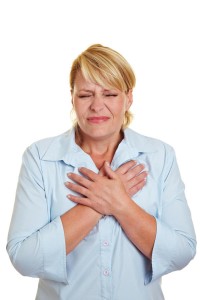An infection of the breast that causes breast pain, swelling, warmth and reddening of the breast is known as mastitis. The person who has mastitis has fever and chills. It develops among women who are currently breast-feeding and it can also happen to women who are not breast-feeding. It can happen during the first three months after the woman has delivered known as postpartum, but can also happen during breast-feeding. This condition can lead the mother to wean the baby early because of this condition.
Symptoms of mastitis
- There is swelling of the breast
- Warmth and tenderness of the breast when touched
- A fever of 101 F (38.3 C) or higher and feeling ill
- While breast-feeding, there is a burning sensation and pain
- There is skin redness, sometimes in a wedge-shaped pattern

Causes of mastitis
- It can be caused by a blocked milk duct because the breast not completely empty at feedings and it can cause clogging of the ducts and can lead to breast infection.
- Some bacteria from the mother’s skin surface and baby’s mouth can enter the milk ducts through a break or tears in the skin in the nipple or on the milk duct opening and bacteria multiplies and lead to infection of the breast. These germs are not harmful to the baby only they just do not belong in the breast tissues.
Treatment and home remedies of mastitis
- Mastitis can be treated with antibiotic that requires a 10 to 14 day course.
- The person can also take some pain relievers like Tylenol, Advil and Motrin.
- The mother can do some self-caring by resting, continue breast-feeding and drinking plenty of fluids in order to help the body fight the infection.
- If the mother is at home continue the breast-feeding routine and rest as much as possible.
- Avoiding the prolonged overfilling of the breast with milk before breast-feeding
- If the mother has difficulty emptying a portion of the breast, apply a warm compress or taking a warm shower before feeding the baby or pumping out the milk. If you want to learn how to use a warm compress, click here.
- Use different and comfortable positions in breast-feeding the baby
- Drinking plenty of liquids
- The mother should wear a bra that has adequate support
- If the infected breast is too sore for breast-feeding, try to pump the milk and hand-expressing the milk.
Prevention of mastitis
- Drain all the milk from the breast while breast-feeding
- Changing the position used in breast-feeding once in while
- Allowing the baby to fully drain all the milk from one breast before feeding to the other breast.
- Alternate the breast offered first at each feeding
- Do not let the baby use the breast as pacifier. Babies just enjoy sucking on the breast even when they are not hungry.
- See to it that the baby sucks the nipples properly during feeding.
